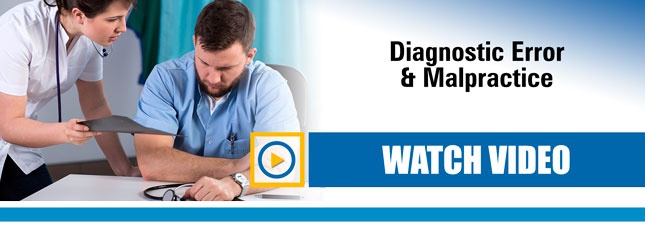 Acute abdominal pain presents a significant challenge to all healthcare professionals who care for geriatric patients. The signs and symptoms may be atypical, the differential diagnosis is vast, the workup is time-consuming, and the stakes are high. It is estimated that of all elderly patients who present to the emergency department with abdominal pain, as many as 50% will require admission and 30%-40% will require surgery.The mortality of elderly patients admitted with abdominal pain is nine times that of younger patients. There is no question that acute abdominal pain in the elderly must be taken seriously—it is not only a clinical problem that is associated with high morbidity and mortality, but it also has a high risk of poor outcome and potential medical-legal liability.
Acute abdominal pain presents a significant challenge to all healthcare professionals who care for geriatric patients. The signs and symptoms may be atypical, the differential diagnosis is vast, the workup is time-consuming, and the stakes are high. It is estimated that of all elderly patients who present to the emergency department with abdominal pain, as many as 50% will require admission and 30%-40% will require surgery.The mortality of elderly patients admitted with abdominal pain is nine times that of younger patients. There is no question that acute abdominal pain in the elderly must be taken seriously—it is not only a clinical problem that is associated with high morbidity and mortality, but it also has a high risk of poor outcome and potential medical-legal liability.
Rather than discuss all possible causes of abdominal pain in the elderly, the “diagnostic traps” of five high-risk conditions that cause acute abdominal pain in the elderly will each be briefly discussed.
Delayed presentation is common with appendicitis; about 20% of cases have symptoms for over three days. There may be no migration of pain, anorexia may be absent, and nausea or vomiting is present in 50% or less of patients. Temperatures may be normal. Although a WBC is frequently performed, it can be <10,000 in 20% of patients. Finally, abdominal films may be interpreted as “small-bowel obstruction” and cause delay in seeking prompt surgical consultation. CT imaging has largely replaced the use of plain abdominal X-rays and has greatly increased diagnostic accuracy.
Perforated peptic ulcers may present with sudden, severe onset of abdominal pain in the elderly. However, up to one-half of patients give a history of more gradual onset. The pain may be generalized or even in the lower quadrants; intestinal contents leak down the gutters. The physical finding of abdominal rigidity may be absent. Even the hallmark of a perforated viscus—the finding of free air on plain films—can be absent.
Large bowel obstruction can be a difficult diagnosis in the elderly for several reasons. The presence of diarrhea is frequently reported, and obstipation may be lacking. Vomiting is often absent despite the obstruction, and pain may onset gradually rather than suddenly.
 Acute mesenteric ischemia will typically present with the complaint of pain that is out of proportion to the physical findings. The pain, however, may be gradual in onset; in addition, hard evidence for ischemia is lacking early in the course. The elderly patient with mesenteric ischemia may report prior similar episodes. Early in the course, stool exam is frequently guaiac negative; positive laboratory findings are late findings. This condition should be suspected in elderly patients with abdominal pain and underlying cardiovascular disease.
Acute mesenteric ischemia will typically present with the complaint of pain that is out of proportion to the physical findings. The pain, however, may be gradual in onset; in addition, hard evidence for ischemia is lacking early in the course. The elderly patient with mesenteric ischemia may report prior similar episodes. Early in the course, stool exam is frequently guaiac negative; positive laboratory findings are late findings. This condition should be suspected in elderly patients with abdominal pain and underlying cardiovascular disease.
Abdominal aortic aneurysm should be suspected in any patient over age 50 who presents with abdominal, flank, back, groin or scrotal pain, particularly accompanied by hypotension. In the presence of flank pain and hematuria, AAA can be easily confused for a kidney stone early in the evaluation. Syncope may actually be a primary complaint in the presentation of an AAA.
After a thorough evaluation, not all elderly patients with abdominal pain will be diagnosed with a condition that requires hospital admission. The key to reducing liability for these home-going patients is the discharge instructions. Instructions should clearly state the specific reasons why a patient should return for evaluation, who they are to see next and when, what medications should be taken, and what their diet should be. Tighter, rather than open-ended, follow-up will encourage patients with abdominal pain to seek re-evaluation if their condition is worsening or not resolving.
One more pearl: Before discharging an adult, particularly an elderly adult, with the diagnosis of “gastroenteritis,” ask yourself if this could possibly be an Acute Coronary Syndrome, and consider obtaining an ECG.
A careful history, compulsive exam, high index of suspicion, appropriate use of diagnostic testing, early consultation, and iron-clad discharge instructions are tools all providers must possess to successfully evaluate the geriatric patient with acute abdominal pain, and to avoid having to say one of the dreaded “seven things plaintiff attorneys love to hear”:
- “They were just constipated.”
- “I wish I’d thought of it.”
- “It sounded like a kidney stone.”
- “I should have called a surgeon.”
- “I thought it was just gastroenteritis.”
- “But the CBC was normal.”
- “The pain was in the wrong spot!”
Learn more for CME
All of these concepts are covered in extensive detail in our online course:


